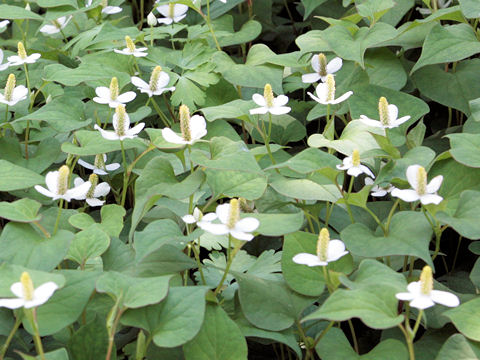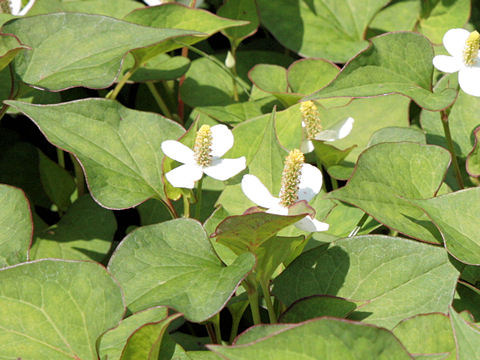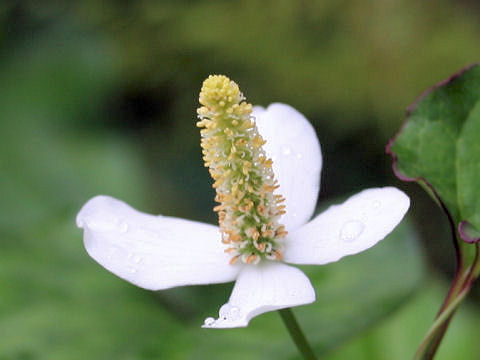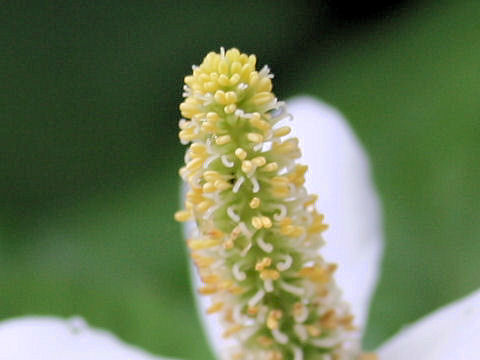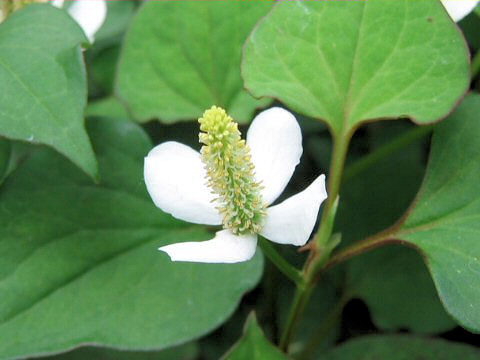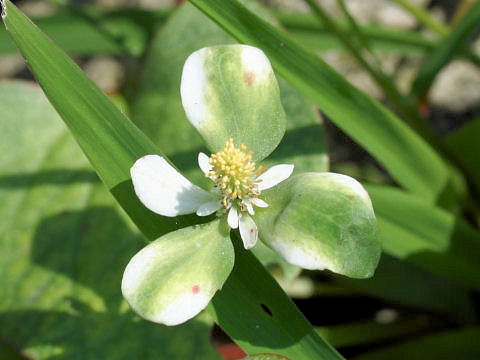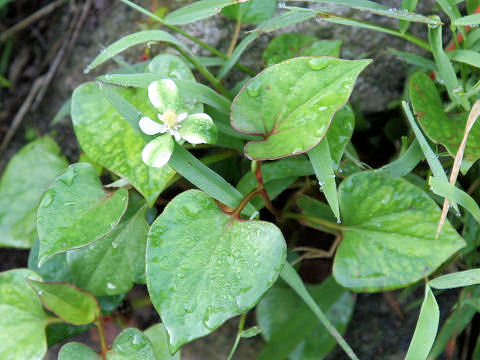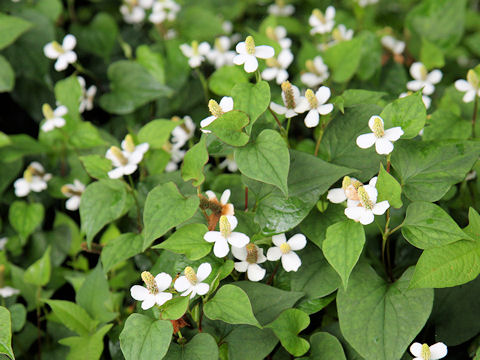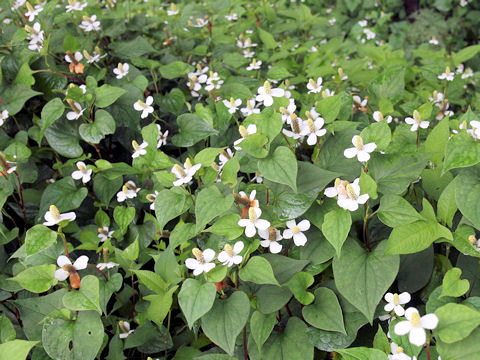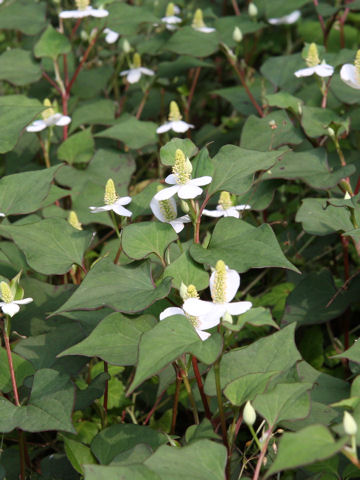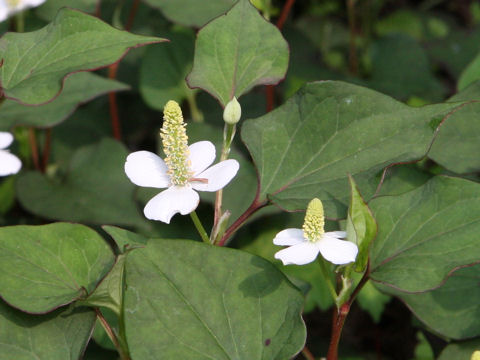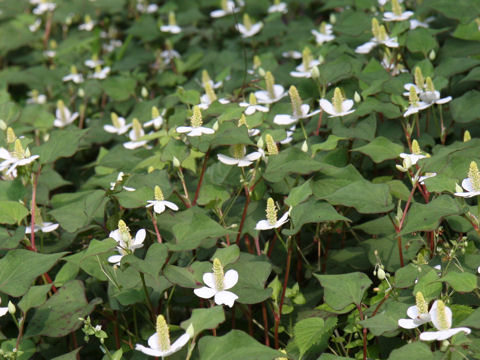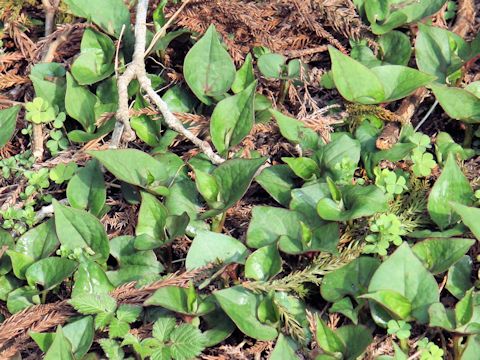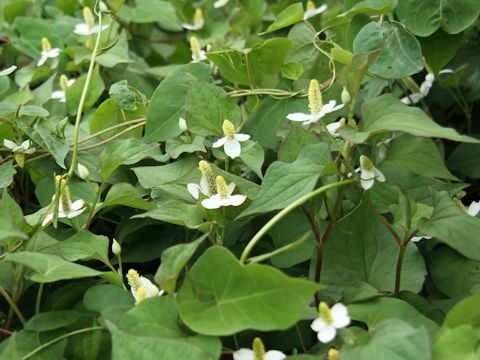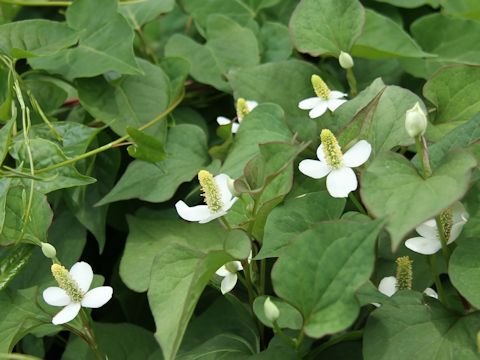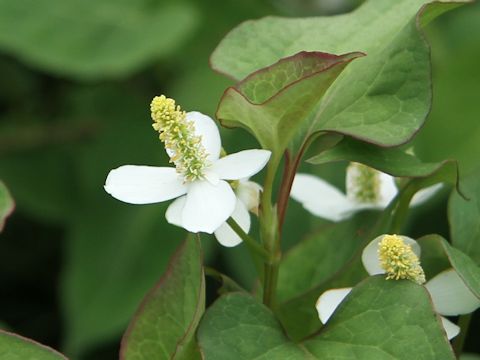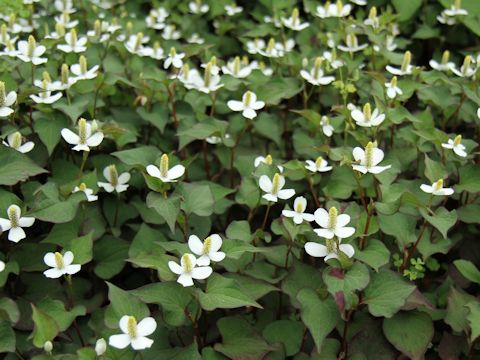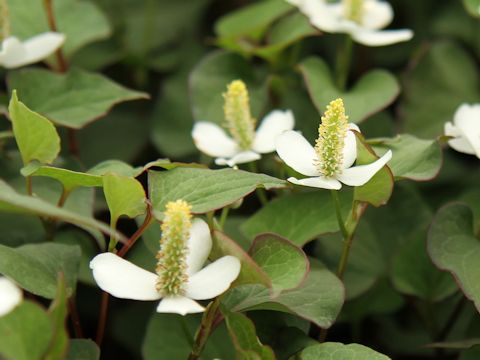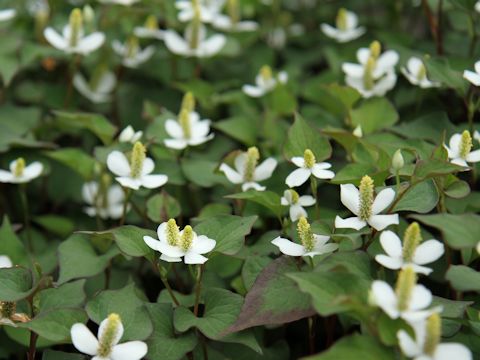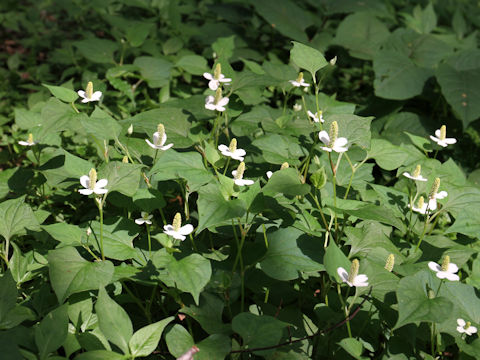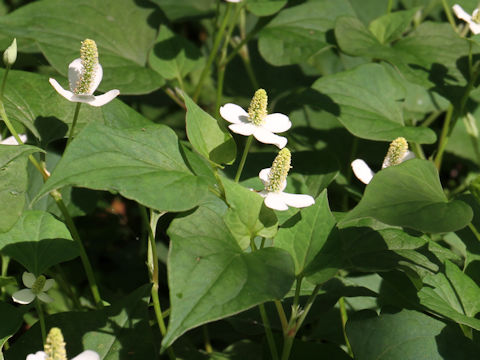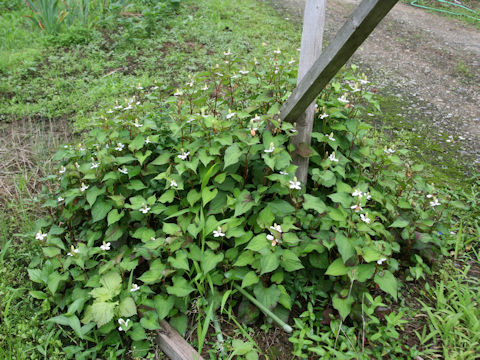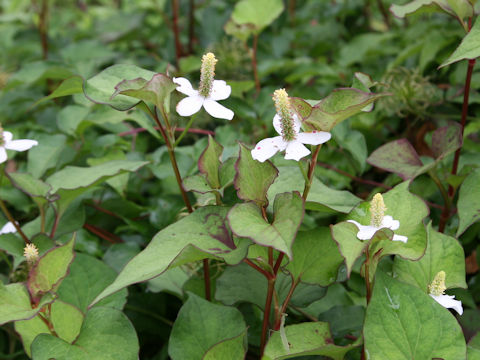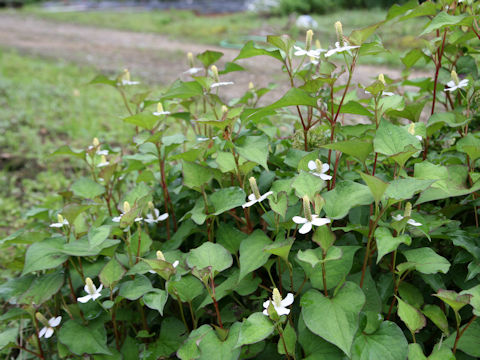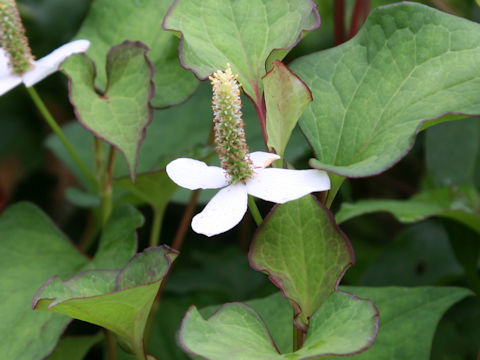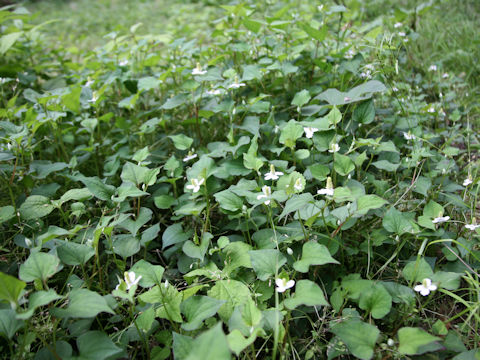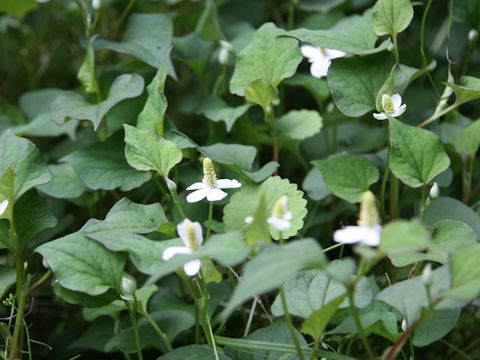
|
|
|
|
−− もっと見る(Show more)−−
−− 閉じる(Close) −−
|
|
|
|
わが国の各地をはじめ、台湾や朝鮮半島、中国、ヒマラヤに分布しています。湿った日陰に生え、地下茎が長くのびて群生します。高さは15〜30センチになり、心形の葉が互生します。5月から7月ごろに花を咲かせます。白い花弁のように見えるのは総苞片です。独特の臭いがあり、虫さされや切り傷、胃腸病など10種類の薬用効果があることから十薬(じゅうやく)とも呼ばれます。ふつう総苞片は4個ですが、これが多数ある「やえどくだみ」もあり、写真中6・中7のような移行型もあります。台湾華語では「蕺菜」、中国語では「蕺菜(ji cai)」と呼ばれます。 |
|
|
ドクダミ科ドクタミ属の多年草で、学名は Houttuynia cordata。英名は Lizard's tail、Fish mint、Chameleon plant。 |
|
|
The Lizard's tail (Houttuynia cordata) belongs to Saururaceae (the Lizard's tail family). It is a perennial herb that is native throughout Japan, as well as the Korean Peninsula, China and the Himalayas. This herb grows in waste shade places and spreads and crowds by elongated rhizomes. It can reach 15-30 cm in height, the leaves are alternate and cordate. The white flowers come in May to July. The involucres look like petals. It has a distinct odor and used for Chinese herbal medicine. Usually, there are four involucral scales, but there is also "Yae-dokudami" which has many involucral scales, and there is a transitional type as shown in the 7th and 8th photos. In Taiwanese Chinese, it is called "蕺菜" and in Chinese "蕺菜" (ji cai). |
|
|
[上・中1] アメリカ・テキサス州「フォートワース植物園」にて、2007年05月13日撮影。(photo by Jon Suehiro) [中2・中3] 長野県小諸市古城区にて、2006年07月09日撮影。 [中4・中5] 大阪府四條畷市清滝中町にて、2004年05月30日撮影。 [中6・中7] 同上にて、2006年07月15日撮影。 [中8・中9] 新潟県胎内市黒俣にて、2008年07月11日撮影。 [中10〜中12] 千葉県香取市仁良にて、2010年06月11日撮影。 [中13] 同上にて、2012年04月13日撮影。 [中14〜中19] 東京都品川区荏原「星薬科大学」にて、2014年06月01日撮影。 [中20〜中22] 山形県山辺町「山形県県民の森」にて、2017年07月09日撮影。 [中23〜中26] 山形県鮎川町中渡にて、2023年07月03日撮影。 [中27・下] 宮城県大河原町大谷「大河原昆虫公園」にて、2024年06月05日撮影。 |

|
|
Shu Suehiro |
